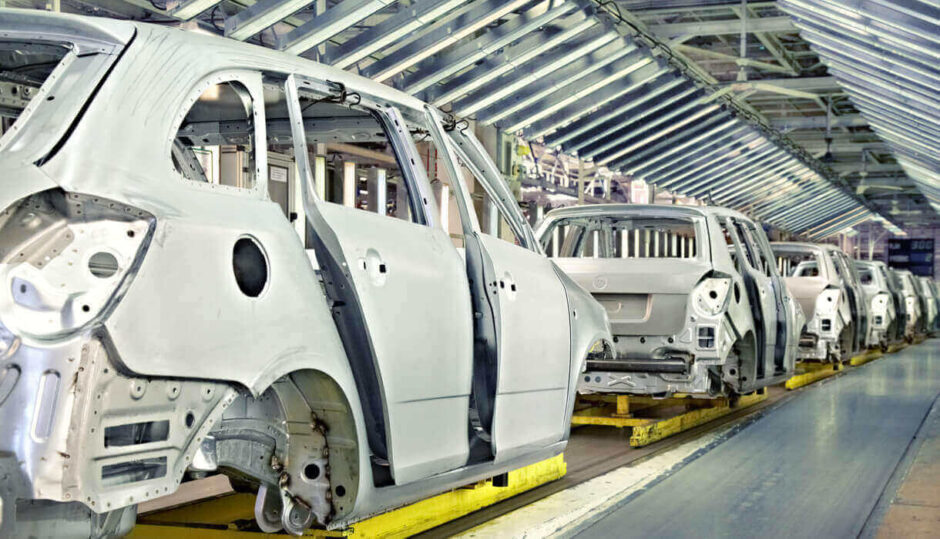
Global Automative Market Grows to $600 billion
### Global Automotive Market Grows to $600 Billion: A Comprehensive Overview
The global automotive market has reached a significant milestone, growing to an impressive $600 billion in 2023. This remarkable growth reflects the industry’s resilience and adaptability in the face of various challenges, including economic fluctuations, technological advancements, and changing consumer preferences. This article delves into the key drivers behind this growth, the current market landscape, and future trends shaping the automotive industry.
#### Key Drivers of Growth
1. **Technological Advancements**:
– The integration of advanced technologies such as electric vehicles (EVs), autonomous driving systems, and connected car solutions has revolutionized the automotive sector. These innovations have not only enhanced vehicle performance and safety but also contributed to the industry’s growth by attracting tech-savvy consumers.
2. **Rising Demand for Electric Vehicles (EVs)**:
– The shift towards sustainable and eco-friendly transportation has significantly boosted the demand for EVs. Governments worldwide are offering incentives and subsidies to promote the adoption of EVs, leading to a surge in sales. Major automakers are investing heavily in EV technology, further driving market expansion.
3. **Expansion in Emerging Markets**:
– Emerging economies, particularly in Asia and Latin America, have witnessed a rapid increase in vehicle ownership. Rising disposable incomes, urbanization, and improved infrastructure have contributed to the growing demand for automobiles in these regions. China and India, in particular, have become major automotive markets.
4. **Innovation in Mobility Solutions**:
– The rise of shared mobility services, such as ride-hailing and car-sharing platforms, has reshaped the automotive landscape. These services offer convenient and cost-effective transportation options, attracting a new segment of consumers and fostering market growth.
#### Current Market Landscape
The automotive market is characterized by intense competition among key players, including established automakers and new entrants. Companies are focusing on innovation, sustainability, and customer experience to differentiate themselves in a crowded market. The industry’s supply chain has also evolved, with a growing emphasis on local sourcing and production to mitigate risks associated with global disruptions.
Key market segments include:
1. **Passenger Vehicles**:
– This segment remains the largest in terms of volume and revenue. The demand for passenger vehicles is driven by factors such as urbanization, rising incomes, and the desire for personal mobility. SUVs and crossovers continue to dominate this segment due to their versatility and popularity among consumers.
2. **Commercial Vehicles**:
– The commercial vehicle segment, encompassing trucks, buses, and vans, is experiencing steady growth. The rise of e-commerce and logistics industries has fueled the demand for efficient and reliable commercial vehicles. Additionally, the adoption of electric and hybrid commercial vehicles is gaining traction.
3. **Luxury and Premium Vehicles**:
– The luxury vehicle market has seen robust growth, driven by affluent consumers seeking high-performance and technologically advanced vehicles. Automakers are introducing innovative features and customization options to cater to this segment’s discerning clientele.
#### Future Trends
The future of the automotive market is shaped by several emerging trends:
1. **Electrification and Sustainability**:
– The push towards sustainability will continue to drive the adoption of electric and hybrid vehicles. Automakers are investing in research and development to enhance battery technology, improve charging infrastructure, and reduce vehicle emissions.
2. **Autonomous Driving**:
– Autonomous driving technology is poised to revolutionize the automotive industry. While fully autonomous vehicles are still in development, advancements in driver-assistance systems are gradually making vehicles safer and more convenient to operate.
3. **Connected and Smart Vehicles**:
– The integration of Internet of Things (IoT) technology is transforming vehicles into smart devices. Connected cars offer features such as real-time traffic updates, remote diagnostics, and enhanced entertainment options, providing a seamless and enjoyable driving experience.
4. **New Business Models**:
– Subscription-based models and flexible ownership options are gaining popularity. These models offer consumers the flexibility to switch vehicles or access different services without the long-term commitment of traditional ownership.
#### Conclusion
The global automotive market’s growth to $600 billion is a testament to the industry’s resilience and adaptability. Technological advancements, rising demand for EVs, expansion in emerging markets, and innovative mobility solutions have been key drivers of this growth. As the industry continues to evolve, embracing sustainability, autonomy, connectivity, and new business models will be crucial in shaping the future of the automotive market. The journey ahead promises to be exciting, with opportunities for both established players and new entrants to make their mark on this dynamic and ever-changing industry.








